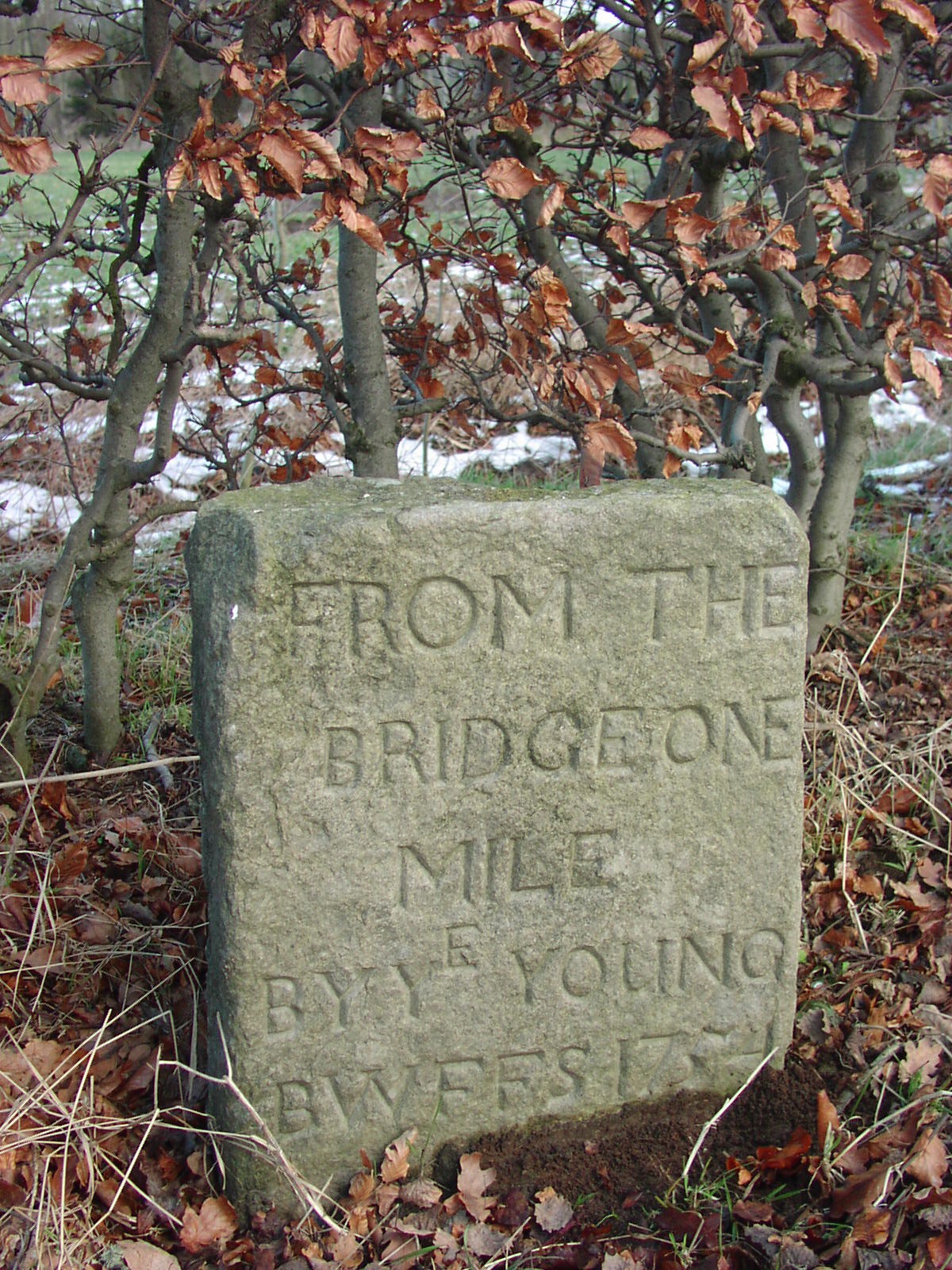One of the aims of the English Government following the uprising in 1745 – 6 was to try and tame that thorn in their flesh, the Scottish Highlander. To that end, a massive amount of money was pumped in to the highlands providing roads to try and facilitate speedy movement of troops.
Most people will have heard the name of General Wade, one of those in charge of road making. What is probably less well known is that it was not only in the far north that the army was involved in civil engineering projects. A marker stone at the eastern end of the beech hedges at Monymusk testifies 'FROM THE BRIDGE ONE MILE BY YE YOUNG BWFES 1754'

Several leases among the Kemnay house papers of the same period state the pieces of land to be leased, 'excepting what is marked out and reserved for the new road from Kemnay'
Roads in these far off times were as important then as they are now and finding money to improve them was sometimes a problem. In the Kirk Session Minutes of Kemnay Parish Church on 14 June 1789 we read the following: The elders having been desired to wait, the Minister informed them that Wm. McKnight, farmer in Nether Coullie, had called upon him and asked him to make a collection here for building a bridge over the Sherriff Burn where the road from this to Aberdeen passes said Burn. The Session, after maturely considering of how general utility such a bridge would be, desired the Minister to intimate a Collection for it, when he thought proper. On November 8th of that year 15/5d (77p) was collected for the bridge. This may not seem a large sum to us, but if we take into consideration that the average weekly collection was about half a crown (12½p) the congregation had responded well to the plea.
The bridge was duly built and may still be seen today. After one has negotiated the roundabout on the old A96 near Sandy Thain's garage heading towards Aberdeen, a burn is crossed. If one looks away to their right, some two hundred and fifty metres upstream stands the bridge in question. Sadly, the investment was not required for very long as the small bridge soon succumbed to progress. The Inverurie Turnpike was constructed in the dying years of the 18th century and the line of the road was moved a little to the east, to that of the old A96, thus leaving our little bridge astride a stream with a road that had now nowhere to go.
